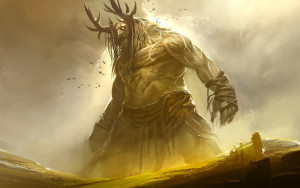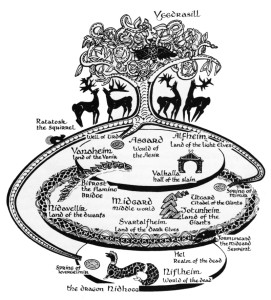Of the nine worlds under Yggdrasill, Muspell, also known as Muspelheim, was the first to exist. It is said that Hel and Niflheim comprised one world making Muspell the ninth world however, Muspell had no place in the tricentric structure of the universe.
“It is light and hot that region flames and burns so that those who do not belong to it cannot endure it”
– Snorri Sturluson
 Muspell is guarded by the giant Surt. Surt has a flaming sword and at the end of the world he will come and vanquish all the gods and burn the whole world with fire.
Muspell is guarded by the giant Surt. Surt has a flaming sword and at the end of the world he will come and vanquish all the gods and burn the whole world with fire.
At Ragnarok, Surt is accompanied by the Sons of Muspell who will “form a host in themselves and that a very bright one.” They are said to break the Bifröst bridge as they and Surt cross, signaling the end of times.

